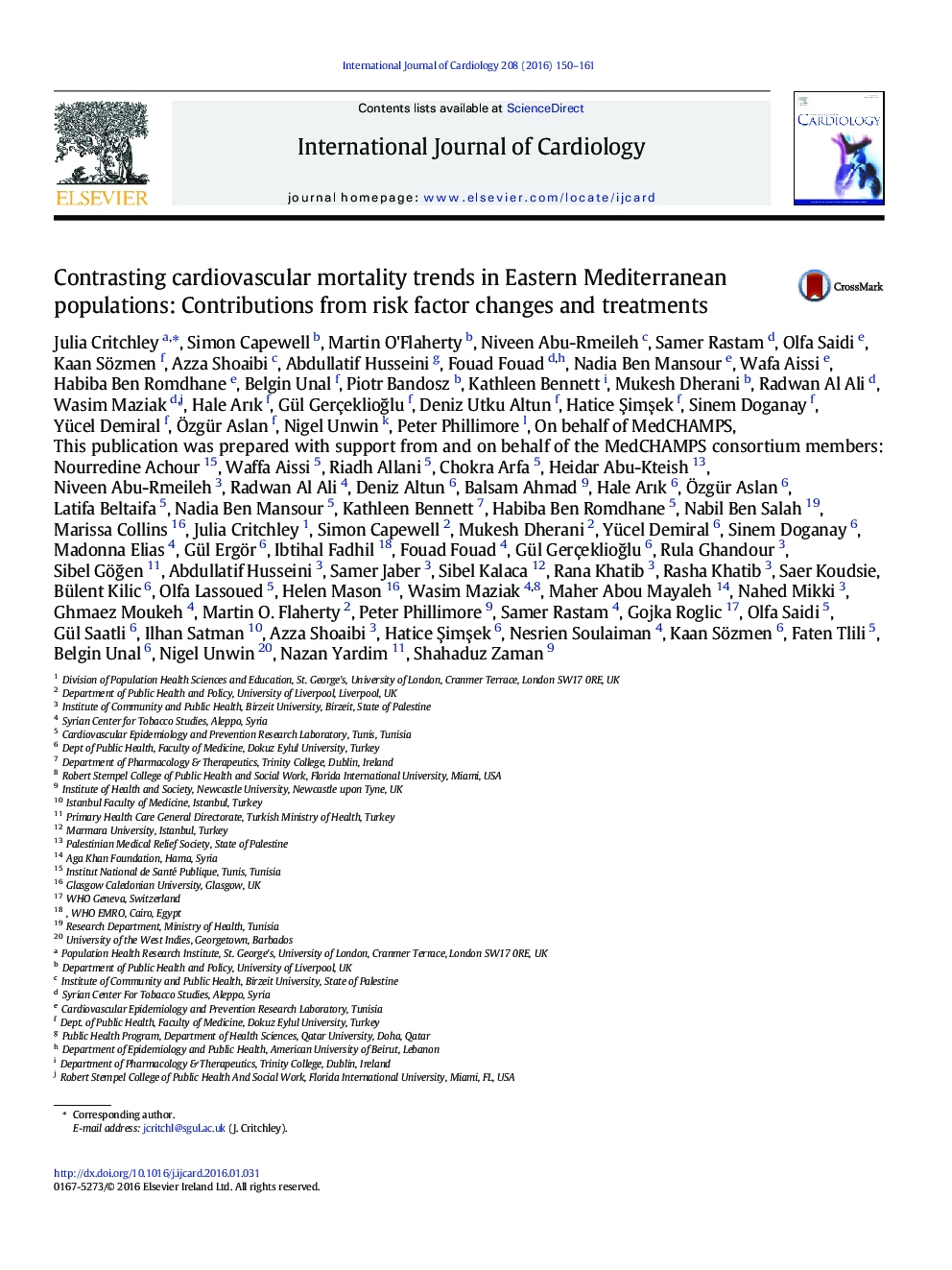| Article ID | Journal | Published Year | Pages | File Type |
|---|---|---|---|---|
| 2928648 | International Journal of Cardiology | 2016 | 12 Pages |
BackgroundMiddle income countries are facing an epidemic of non-communicable diseases, especially coronary heart disease (CHD). We used a validated CHD mortality model (IMPACT) to explain recent trends in Tunisia, Syria, the occupied Palestinian territory (oPt) and Turkey.MethodsData on populations, mortality, patient numbers, treatments and risk factor trends from national and local surveys in each country were collated over two time points (1995–97; 2006–09); integrated and analysed using the IMPACT model.ResultsRisk factor trends: Smoking prevalence was high in men, persisting in Syria but decreasing in Tunisia, oPt and Turkey. BMI rose by 1–2 kg/m2 and diabetes prevalence increased by 40%–50%. Mean systolic blood pressure and cholesterol levels increased in Tunisia and Syria.Mortality trends: Age-standardised CHD mortality rates rose by 20% in Tunisia and 62% in Syria. Much of this increase (79% and 72% respectively) was attributed to adverse trends in major risk factors, occurring despite some improvements in treatment uptake.CHD mortality rates fell by 17% in oPt and by 25% in Turkey, with risk factor changes accounting for around 46% and 30% of this reduction respectively. Increased uptake of community treatments (drug treatments for chronic angina, heart failure, hypertension and secondary prevention after a cardiac event) accounted for most of the remainder.DiscussionCHD death rates are rising in Tunisia and Syria, whilst oPt and Turkey demonstrate clear falls, reflecting improvements in major risk factors with contributions from medical treatments. However, smoking prevalence remains very high in men; obesity and diabetes levels are rising dramatically.
